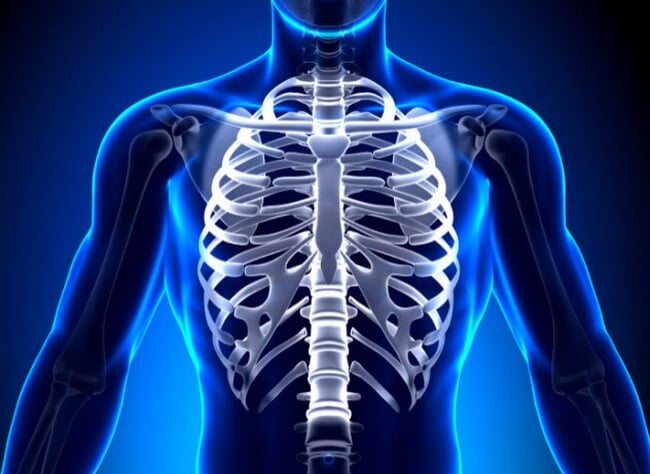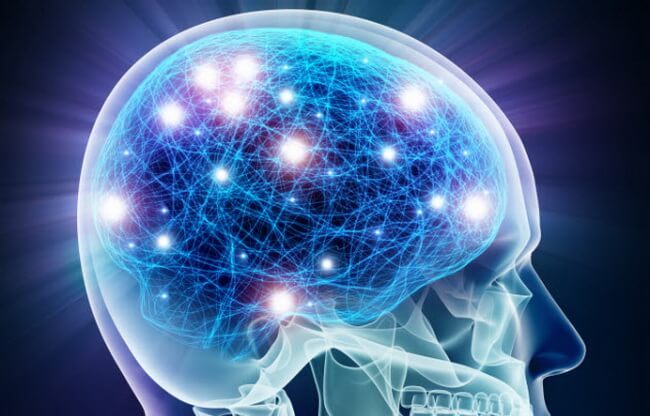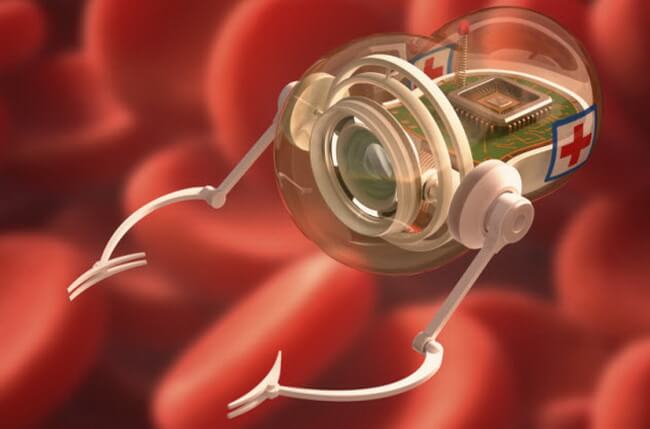- Get link
- X
- Other Apps

The past year for science was very fruitful. Special progress has been made by scientists in the field of medicine. Mankind has made amazing discoveries, scientific breakthroughs and created a lot of useful medicines, which will certainly soon be freely available. We offer to familiarize with the ten most amazing medical breakthroughs of 2015, which will definitely make a serious contribution to the development of medical services in the very near future.
Teixobactin Discovery

In 2014, the World Health Organization warned everyone that humanity was entering the so-called post-antibiotic era. And because she was right. Since 1987, science and medicine have not produced truly new types of antibiotics. However, the disease does not stand still. Every year there are new infections, more resistant to existing drugs. This has become a real world problem. Nevertheless, in 2015, scientists have made a discovery, which, in their opinion, will introduce dramatic changes.
Scientists have discovered a new class of antibiotics of 25 antimicrobials, including a very important one, called teixobactin. This antibiotic destroys germs by blocking their ability to produce new cells. In other words, microbes under the influence of this drug can not develop and develop over time resistance to the drug. To date, Teixobactin has proven to be highly effective in combating resistant Staphylococcus aureus and several bacteria that cause tuberculosis.
Teixobactin laboratory tests were performed on mice. The vast majority of experiments have shown the effectiveness of the drug. Human trials should begin in 2017.
Doctors have grown new vocal cords

One of the most interesting and promising areas in medicine is tissue regeneration. In 2015, the list of organs recreated by an artificial method was replenished with a new item. Doctors from the University of Wisconsin have learned to grow human vocal cords from virtually nothing.
A group of scientists led by Dr. Nathan Velhan in a bioengineering way has created a tissue that can imitate the work of the mucous membrane of the vocal cords, namely the fabric that is represented by the two lobes of the ligaments that vibrate allows you to create human speech. Donor cells, from which new ligaments were subsequently grown, were taken from five volunteer patients. In the laboratory, for two weeks, scientists have grown the necessary tissue, and then added it to the artificial larynx layout.
The sound created by the vocal chords, scientists describe as metallic and compare it with the sound of a robotic kazoo (a toy wind musical instrument). However, scientists are confident that the vocal cords created by them in real conditions (that is, when implanted into a living organism) will almost sound like real ones.
As part of one of the latest experiments on laboratory mice immunized with human immunity, the researchers decided to check whether the rodent's organism would reject the new tissue. Fortunately, this did not happen. Dr. Welham is confident that the tissue will not be rejected by the human body.
A cure for cancer can help patients with Parkinson's disease.

Tisinga (or nilotinib) is a proven and approved medication that is commonly used to treat people with signs of leukemia. However, a new study by the Georgetown University Medical Center shows that Tasing's medicine can be a very powerful tool for controlling motor symptoms in people with Parkinson's disease, improving their motor functions and controlling the non-motor symptoms of this disease.
Fernando Pagan, one of the doctors who conducted this study, believes that nilotinib therapy may be the first of its kind to be effective in reducing the degradation of cognitive and motor functions in patients with neurodegenerative diseases such as Parkinson's disease.
Scientists for six months gave increased doses of nilotinib to 12 volunteer patients. In all 12 patients who had completed this test of the drug to the end, there was an improvement in motor function. 10 of them noted a significant improvement.
The main objective of this study was to test the safety and safety of nilotinib on the human body. The dose used was much less than that usually given to patients with leukemia. Despite the fact that the drug has shown its effectiveness, the study was still conducted on a small group of people without involving control groups. Therefore, before Tasingu will be used as a treatment for Parkinson's disease, several more tests and scientific studies will have to be carried out.
The world's first 3D printed chest

Over the past few years, 3D printing technology has penetrated many areas, leading to amazing discoveries, developments and new production methods. In 2015, doctors from the University Hospital of Salamanca in Spain conducted the world's first surgery to replace the damaged chest of the patient with a new 3D-printed prosthesis.
The man suffered from a rare type of sarcoma, and the doctors had no other choice. To avoid the spread of the tumor further in the body, experts removed almost the entire sternum from a person and replaced the bones with a titanium implant.
As a rule, implants for large parts of the skeleton are made from a variety of materials that can wear out over time. In addition, the replacement of such a complex articulation of bones as bones of the sternum, which, as a rule, are unique in each individual case, required doctors to conduct a thorough scan of the human sternum in order to develop an implant of the right size.
As a material for the new sternum, it was decided to use a titanium alloy. After conducting high-precision three-dimensional computed tomography, scientists used a $ 1.3 million Arcam printer and created a new titanium chest. The operation to install a new sternum to the patient was successful, and the person has already completed a full course of rehabilitation.
From skin cells to brain cells

Scientists from the California Salk Institute in La Jolla devoted the past year to research on the human brain. They have developed a method for transforming skin cells into brain cells and have already found several useful applications for a new technology.
It should be noted that scientists have found a way to turn skin cells into old brain cells, which simplifies their further use, for example, in research on Alzheimer's and Parkinson's diseases and their relationship with the effects caused by aging. Historically, the brain cells of animals were used for such studies, but scientists in this case were limited in their capabilities.
More recently, scientists have been able to transform stem cells into brain cells that can be used for research. However, this is quite a laborious process, and the output is obtained cells that can not imitate the work of the brain of an elderly person.
As soon as the researchers developed a method for artificially creating brain cells, they focused their efforts on creating neurons that could produce serotonin. And although these cells have only a tiny fraction of the capabilities of the human brain, they actively assist scientists in researching and searching for drugs for such diseases and disorders as autism, schizophrenia, and depression.
Birth control pills for men

Japanese scientists from the Research Institute for Microbial Disease Research in Osaka published a new scientific work, according to which in the near future we will be able to produce actually active birth control pills for men. In their work, scientists describe the study of drugs "Tacrolimus" and "Tsikssosporin A".
Typically, these drugs are used after organ transplants to suppress the body's immune system so that it does not reject new tissue. Blockade occurs due to inhibition of the production of calcineurin enzyme, which contains PPP3R2 and PPP3CC proteins, usually found in male semen.
In their study on laboratory mice, scientists found that as soon as PPP3CC protein is not produced enough in rodents, their reproductive functions are drastically reduced. This led researchers to conclude that an insufficient amount of this protein can lead to sterility. After a more thorough study, experts concluded that this protein gives sperm cells the flexibility and necessary strength and energy to penetrate the egg cell membrane.
Check on healthy mice only confirmed their discovery. Only five days of use of the drugs "Tacrolimus" and "Tsikssosporin A" led to complete sterility of mice. However, their reproductive function fully recovered only a week after they stopped giving these drugs. It is important to note that calcineurin is not a hormone, so the use of drugs in no way reduces sexual desire and the excitability of the body.
Despite promising results, it will take several years to create real male contraceptive pills. About 80 percent of mouse studies are not applicable to human cases. However, scientists still hope for success, since the effectiveness of the drugs has been proven. In addition, similar drugs have already passed human clinical trials and are widely used.
DNA printing

3D printing technologies have led to the emergence of a unique new industry - the printing and sale of DNA. True, the term “seal” is used here rather for commercial purposes, and does not necessarily describe what actually happens in this area.
The Executive Director of Cambrian Genomics explains that this process is best described by the phrase “checking for errors” rather than “printing”. Millions of DNA parts are placed on tiny metal substrates and scanned by a computer that selects the chains that ultimately have to make up the entire sequence of the DNA chain. After that, the laser neatly cut the necessary connections and placed them in a new chain, previously ordered by the client.
Companies like Cambrian believe that in the future, people will be able to create new organisms just for fun thanks to special computer equipment and software. Of course, such assumptions will immediately cause the righteous anger of people who doubt the ethical correctness and practical use of these studies and opportunities, but sooner or later, as we would like it or not, we will come to this.
Now DNA printing shows little promising potential in the medical field. Drug manufacturers and research companies are among the first customers of companies like Cambrian.
Researchers from the Karolinska Institute in Sweden went even further and began to create various figures from DNA chains. DNA origami, as they call it, may at first glance seem like ordinary indulgence, but there is also practical potential for using this technology. For example, it can be used in the delivery of drugs into the body.
Nanobots in vivo

In early 2015, the field of robotics won a great victory when a group of researchers from the University of California at San Diego announced that they had conducted the first successful tests using nanobots that had completed their task while inside a living organism.
In this case laboratory mice acted as a living organism. After the nanobots were placed inside the animals, the micromachines went to the stomachs of the rodents and delivered the cargo placed on them, which was microscopic gold particles. By the end of the procedure, the scientists did not notice any damage to the internal organs of the mice and thus confirmed the usefulness, safety and effectiveness of the nanobots.
Further tests showed that the particles of gold delivered by nanobots in the stomachs remain more than those that were simply introduced there with food intake. This prompted scientists to the idea that nanobots in the future will be able to much more efficiently deliver the necessary drugs into the body than with more traditional methods of their introduction.
The motor chain of tiny robots consists of zinc. When it comes into contact with the body's acid-base medium, a chemical reaction occurs, resulting in the production of hydrogen bubbles, which promote the nanobots inside. After some time, the nanobots simply dissolve in the acidic environment of the stomach.
Despite the fact that this technology has been developed for almost a decade, only in 2015, scientists were able to conduct its actual tests in a living environment, rather than the usual Petri dishes, as has been done many times before. In the future, nanobots can be used to identify and even treat various diseases of internal organs, by acting with the right medications on individual cells.
Injection brain nanoimplant

A group of scientists from Harvard has developed an implant that promises the possibility of treating a number of neurodegenerative disorders that lead to paralysis. The implant is an electronic device consisting of a universal frame (grid), to which later on it will be possible to connect various nanodevices after inserting it into the patient's brain. Thanks to the implant, it will be possible to monitor the neural activity of the brain, stimulate the functioning of certain tissues, and also accelerate the regeneration of neurons.
The electronic grid consists of conductive polymer filaments, transistors or nanoelectrodes, which interconnect the intersection. Almost the entire area of the grid consists of holes, which allows living cells to form new compounds around it.
By early 2016, a team of scientists from Harvard is still conducting safety tests using a similar implant. For example, two mice were implanted in the brain with a device consisting of 16 electrical components. Devices are successfully used to monitor and stimulate certain neurons.
Artificial Production of Tetrahydrocannabinol

For many years, marijuana has been used in medicine as an analgesic and, in particular, to improve the condition of cancer patients and AIDS. In medicine, a synthetic substitute for marijuana, or rather its main psychoactive component tetrahydrocannabinol (or THC), is also actively used.
However, biochemists from the Technical University of Dortmund announced the creation of a new type of yeast fungus that produces THC. Moreover, according to unpublished data, it is known that these same scientists have created another kind of yeast fungus that produces cannabidiol, another psychoactive component of marijuana.
In marijuana contains several molecular compounds that are of interest to researchers. Therefore, the discovery of an effective artificial way of creating these components in large quantities could be of great benefit to medicine. However, the method of ordinary cultivation of plants and the subsequent extraction of the necessary molecular compounds is now the most effective way. Within 30 percent of the dry mass of modern marijuana species may contain the desired component of THC.
Despite this, Dortmund scientists are confident that they will be able to find a more efficient and faster way to extract THC in the future. To date, the created yeast fungus is re-grown on the molecules of the same fungus instead of the preferred alternative in the form of simple sugars. All this leads to the fact that with each new batch of yeast, the amount of the free component of THC decreases.
In the future, scientists promise to optimize the process, maximize THC production and scale up to industrial needs, which ultimately will meet the needs of medical research and European regulators who are looking for new ways to produce tetrahydrocannabinol without growing marijuana itself.
The article is based on materials .
- Get link
- X
- Other Apps
Comments
Post a Comment